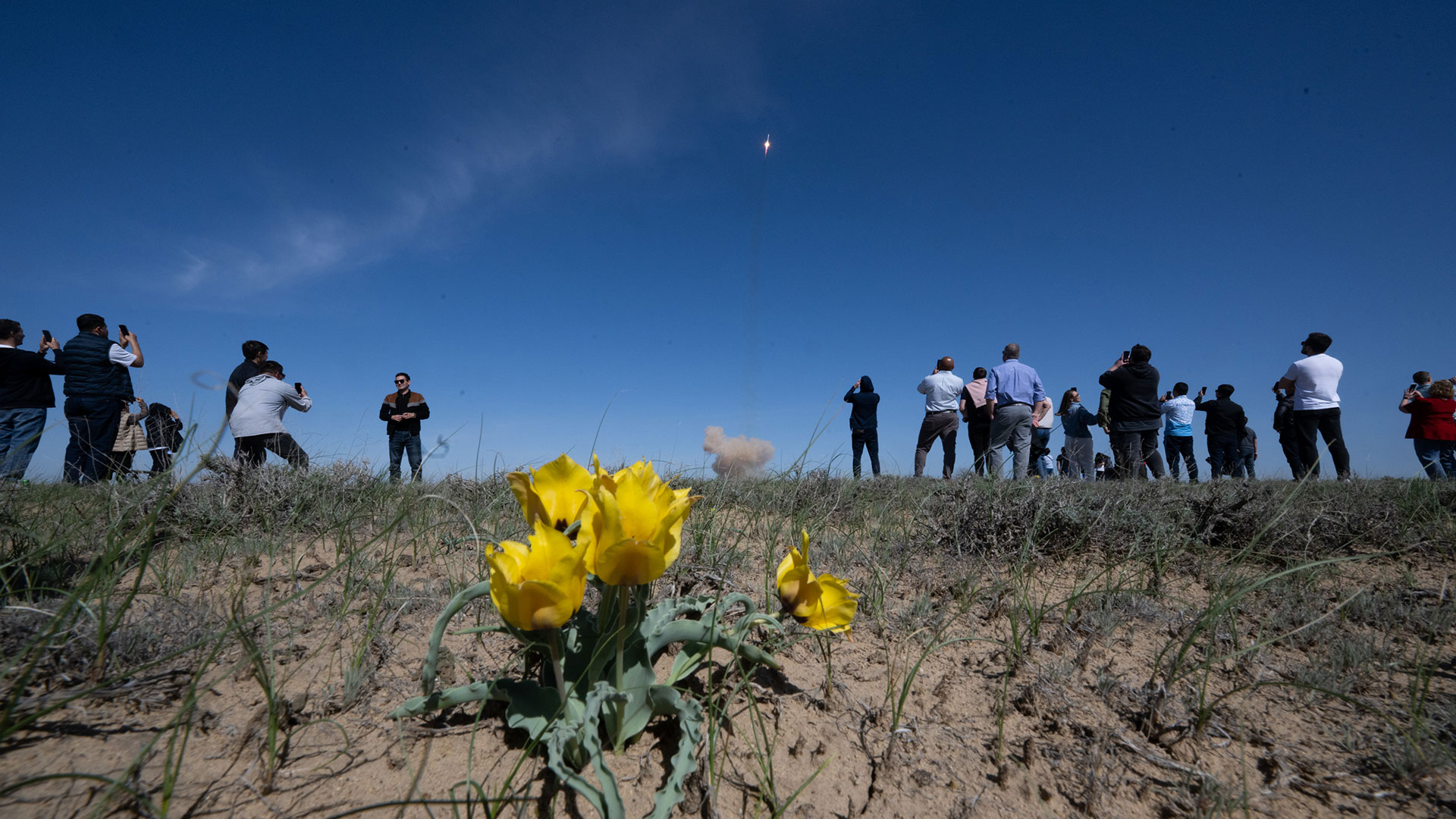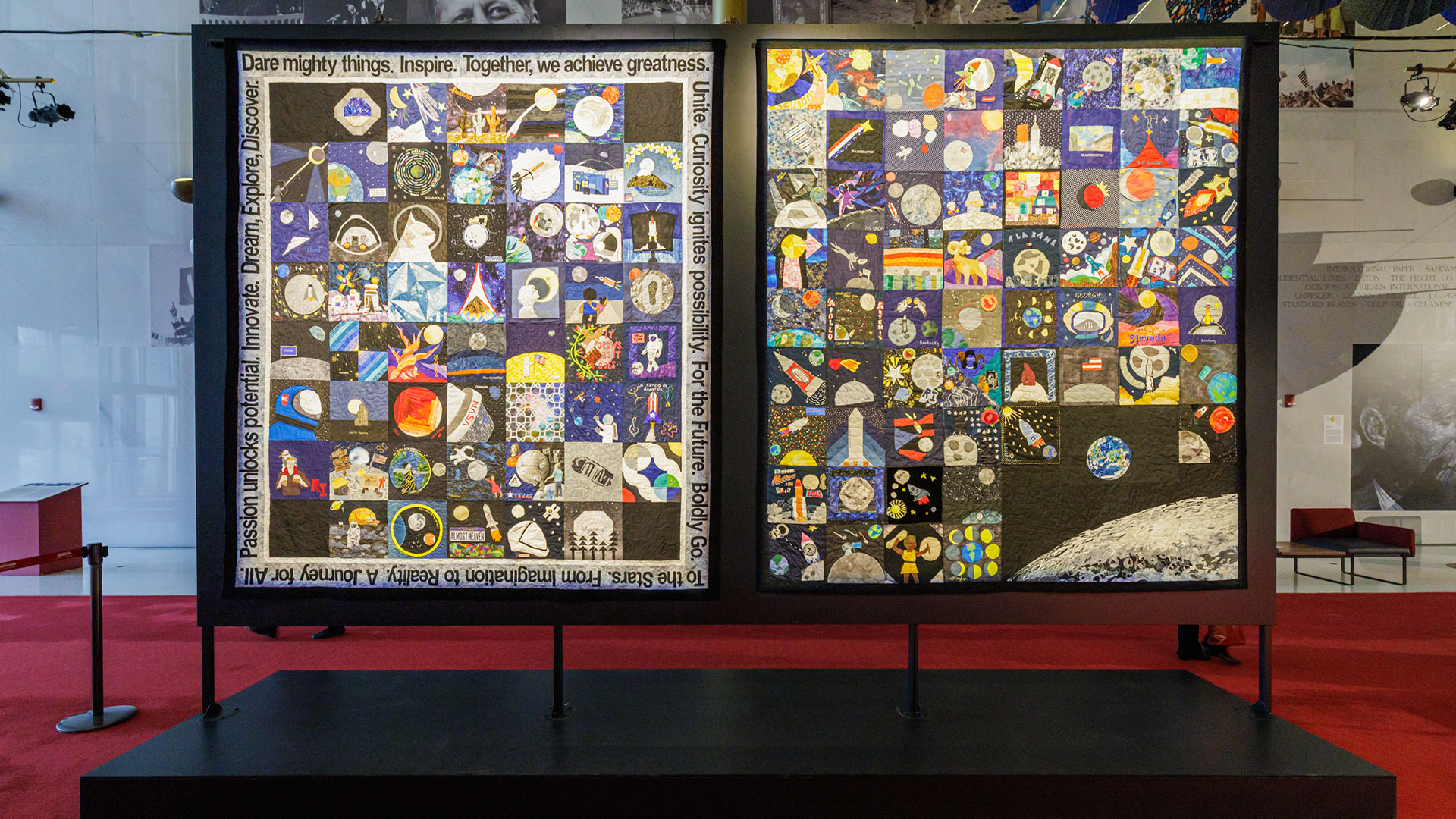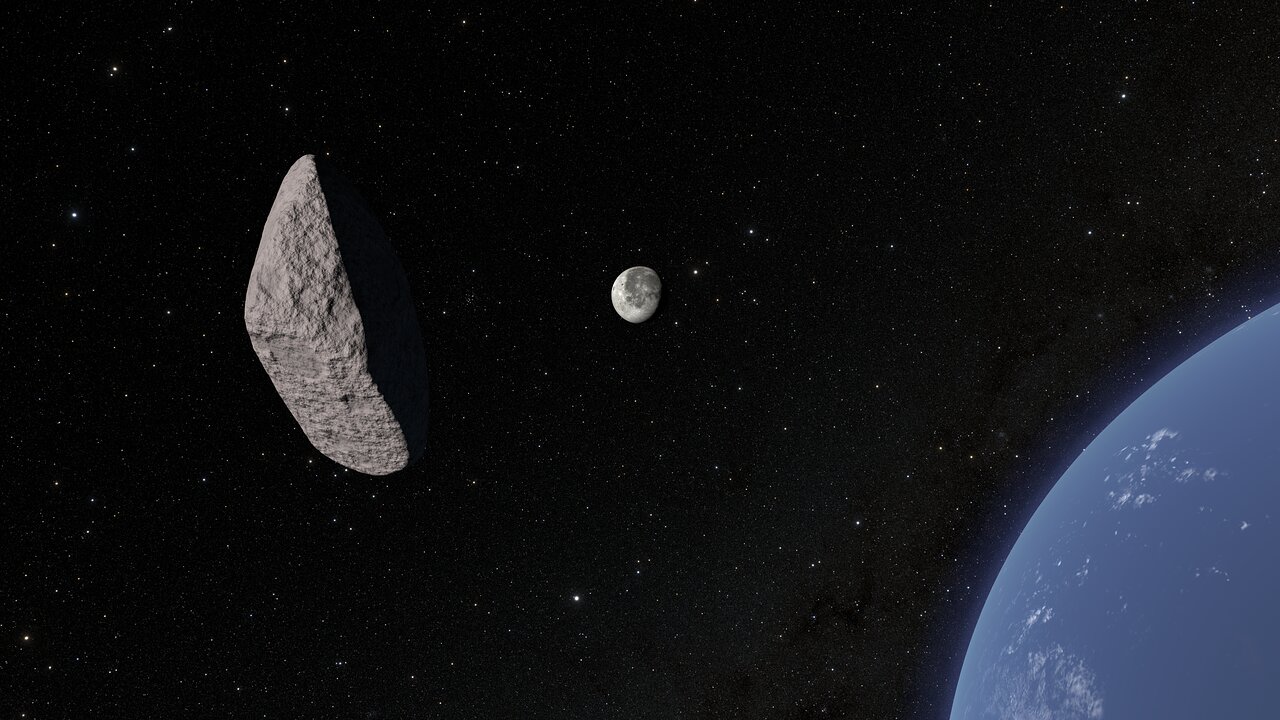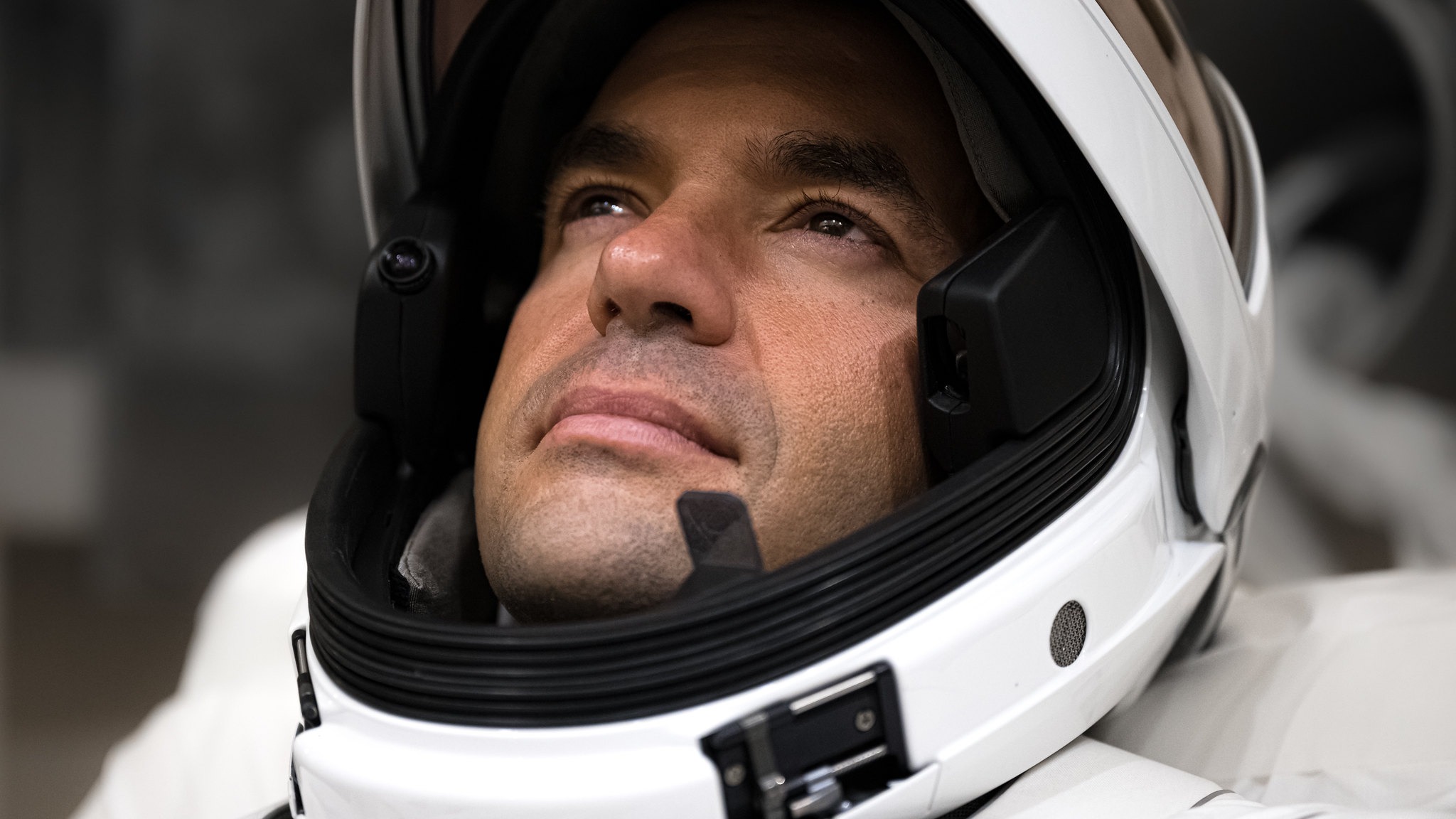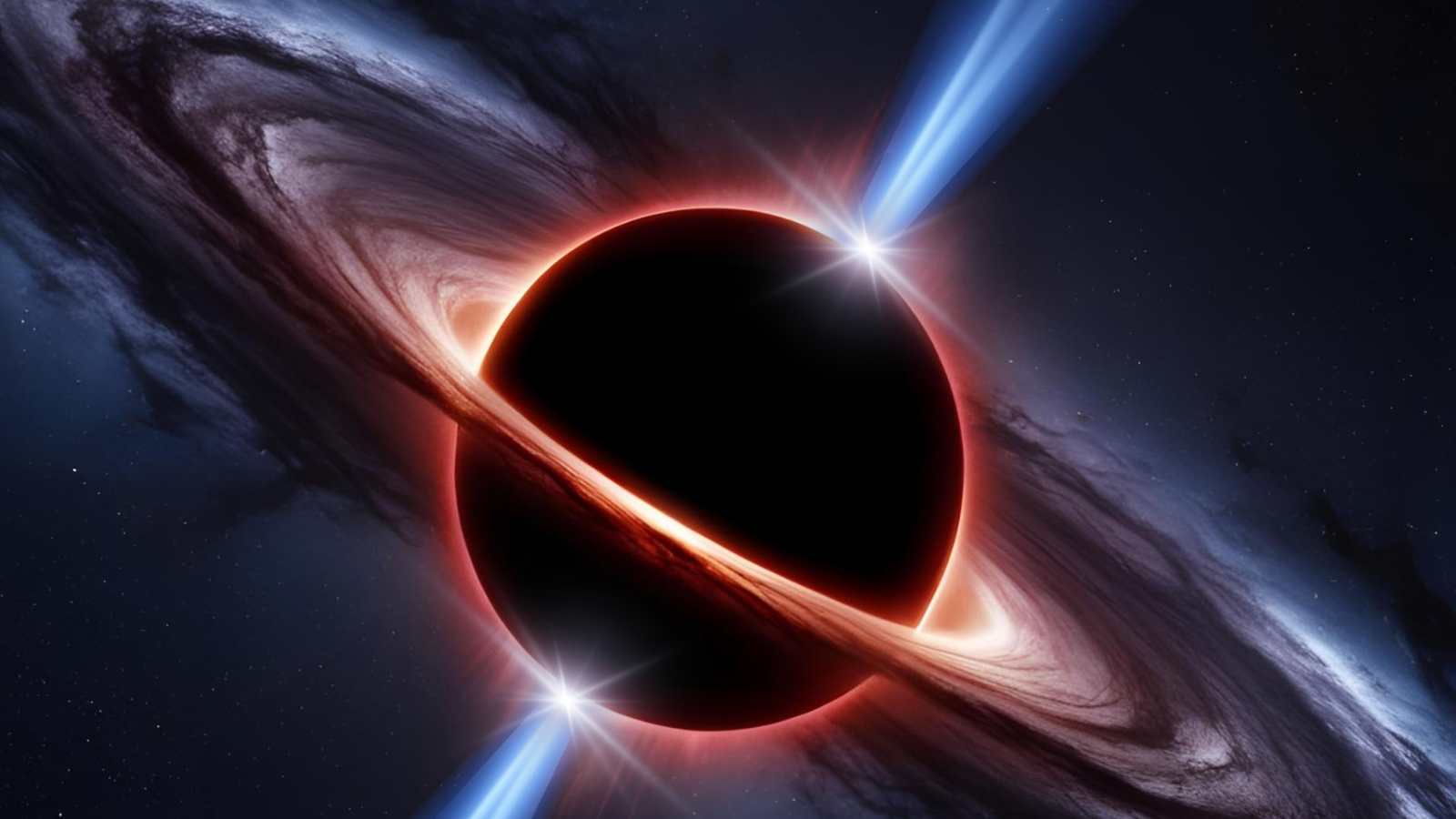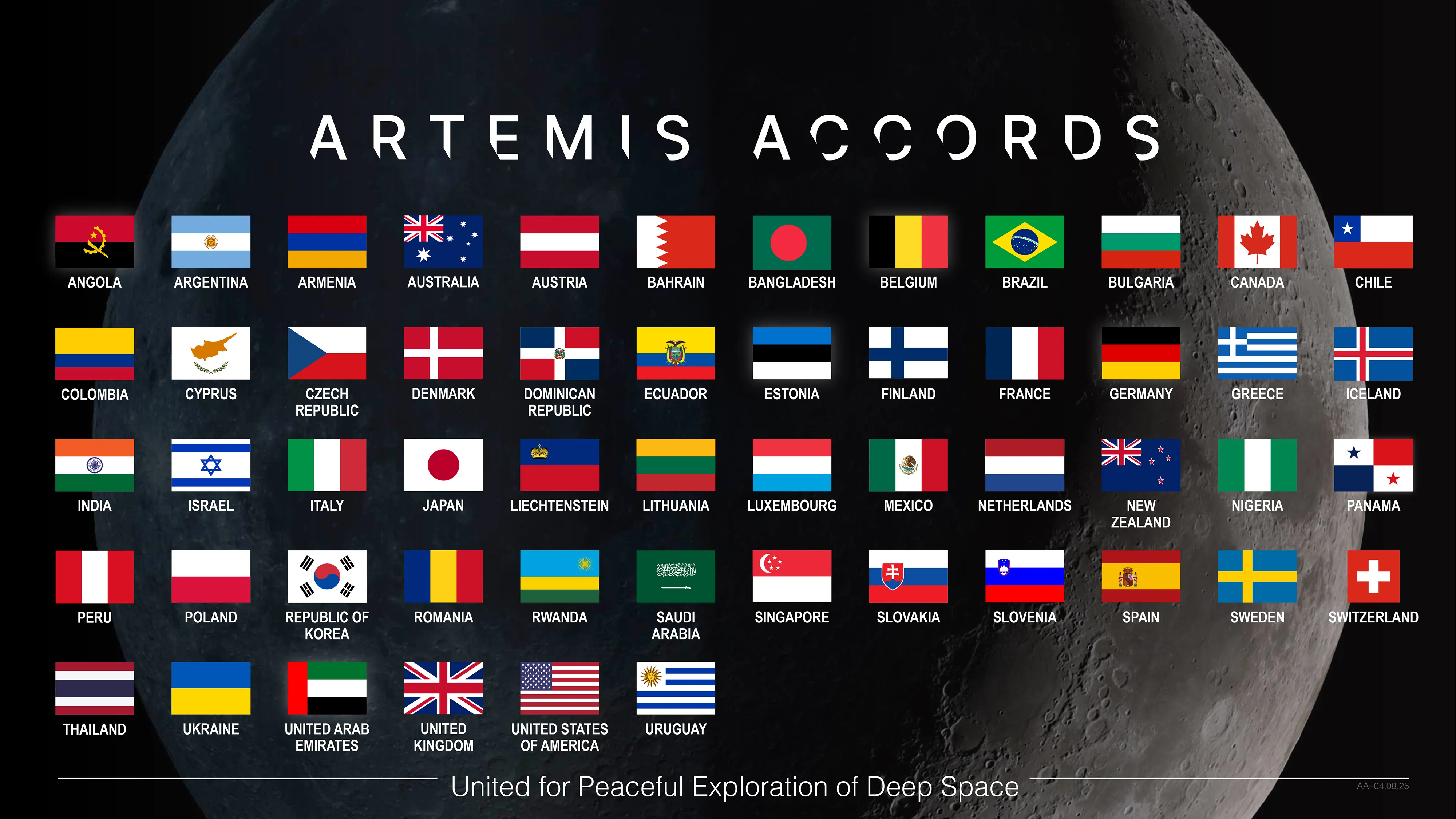Trump administration removes Apollo moon rock from White House Oval Office
The moon rock will be given back to NASA, according to a space agency spokesperson.
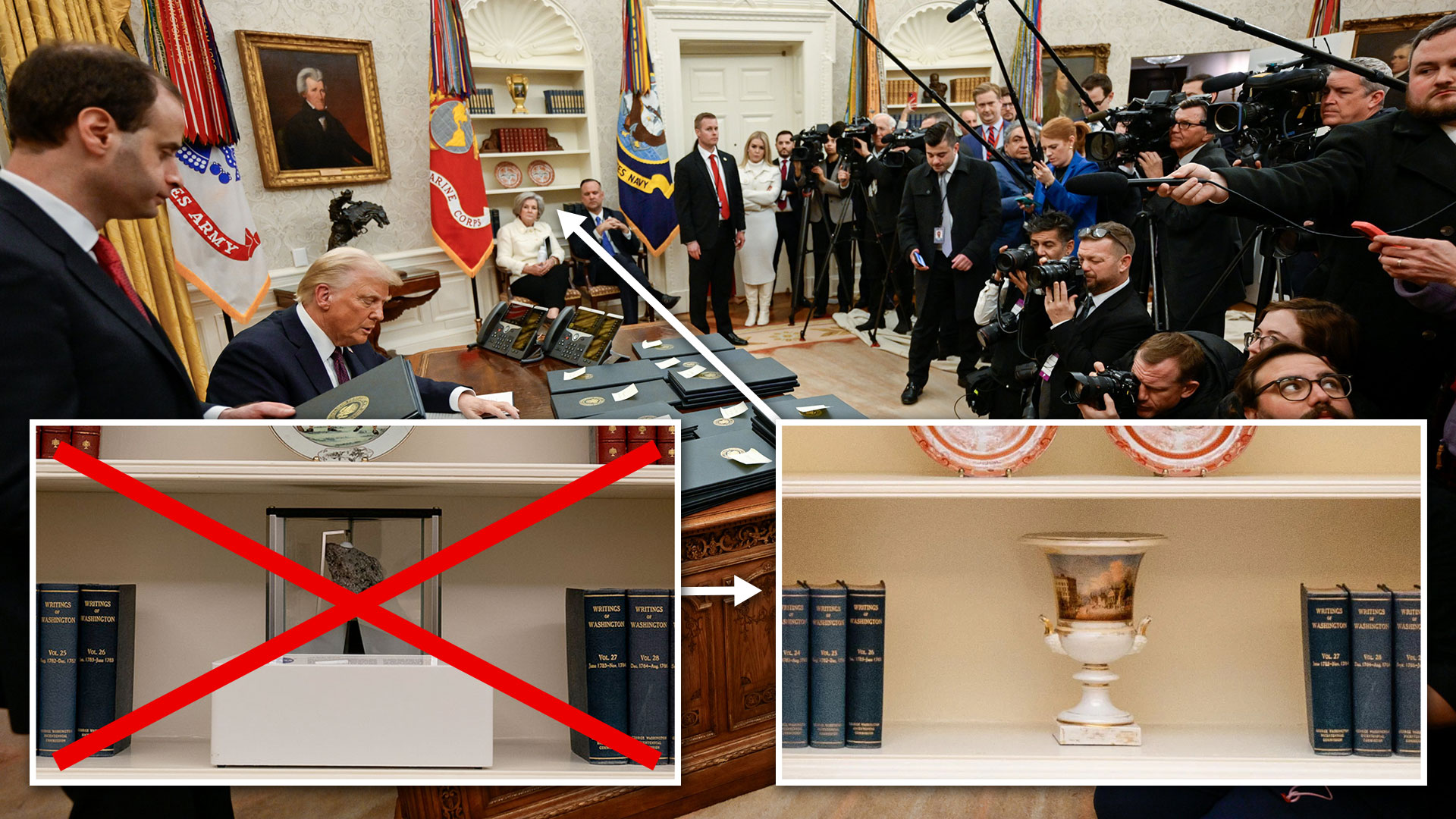
Whether President Donald Trump still supports returning astronauts to the lunar surface remains to be seen, but one thing is for certain — the moon no longer has a place in his White House.
A moon rock, which for the past four years has been on display in the Oval Office, was removed as part of the Trump administration's redesign of the West Wing's most high-profile room. A NASA spokesperson confirmed the moon rock is being returned to the space agency in an email to collectSPACE.com.
The lunar sample, which was brought back to Earth by the last Apollo astronauts to walk on the moon in 1972, was intended as a symbol of the ongoing research being conducted by NASA as it prepares for future missions "to the cislunar orbit and beyond," as a plaque on the display's base read.
"We will pursue our manifest destiny into the stars, launching American astronauts to plant the Stars and Stripes on the planet Mars," said Trump as part of his inaugural address on Jan. 20. That the newly sworn-in president did not also mention the moon raised some questions, given that it was during his first term in office that NASA was directed to refocus its efforts on landing astronauts there.
Some of Trump's current advisors, including SpaceX CEO Elon Musk, have expressed support for a direct to Mars approach. That said, Trump's choice for NASA Administrator, billionaire entrepreneur and private astronaut Jared Isaacman, said in response to his nomination that "Americans will walk on the moon and Mars" (his comments, though, preceded the president's address).
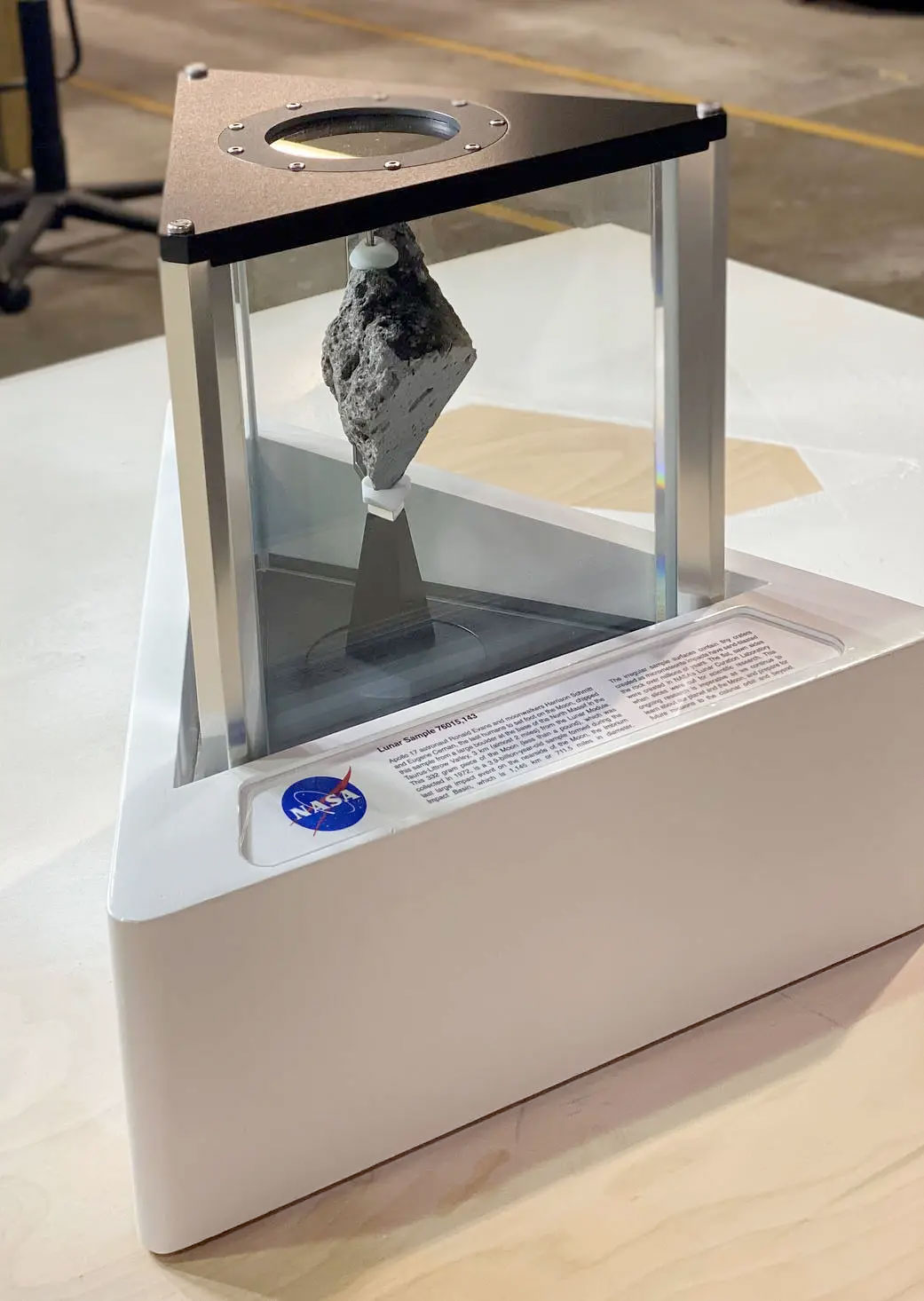
Whether the moon rock's removal had anything to do with Trump's plans for the future of U.S. human spaceflight is unknown. Photos show that an urn that was previously on display during Trump's first term has been returned to the bookshelf where the 0.7-pound (333-gram) lunar sample sat.
The rock may have been removed given its connection to the past administration, though a portrait of Benjamin Franklin added by President Joe Biden also as a nod to his focus on science remains).
"We loved seeing the moon rock in the Oval Office and we know that you asked to have it put in there," NASA astronaut Reid Wiseman said to Biden during a 2023 visit to the White House in Washington, DC. Wiseman is assigned to command NASA's Artemis II mission, which is planned as the first crewed flight to the moon since the end of the Apollo program.
"The closest I came to the moon was my moon rock here," said Biden while giving a tour of the Oval Office to Wiseman and his three crewmates. "Fifty years later, it's a big deal."
"I am so damn proud and envious of what you're about to do — really and truly," said Biden.
Biden was the second president to display a moon rock in the Oval Office. The first, Bill Clinton, requested that an Apollo 11 sample remain at the White House after it was brought there for a 30th anniversary commemoration of the first moon landing in 1999. It sat at the center of the room until he left office in January 2001.
"I put the moon rock on the table and for the next two years, when we had Republicans and Democrats in, or people on two sides of any issue, and they'd start really, really getting out of control, I'd say, 'Wait, wait, wait — you see that moon rock, it is 3.6 billion years old. Now we're all just passing through here and we don't have very much time, so let's just calm down and figure out what the right thing to do is.' And it worked every single time," said Clinton in a 2015 National Geographic interview.
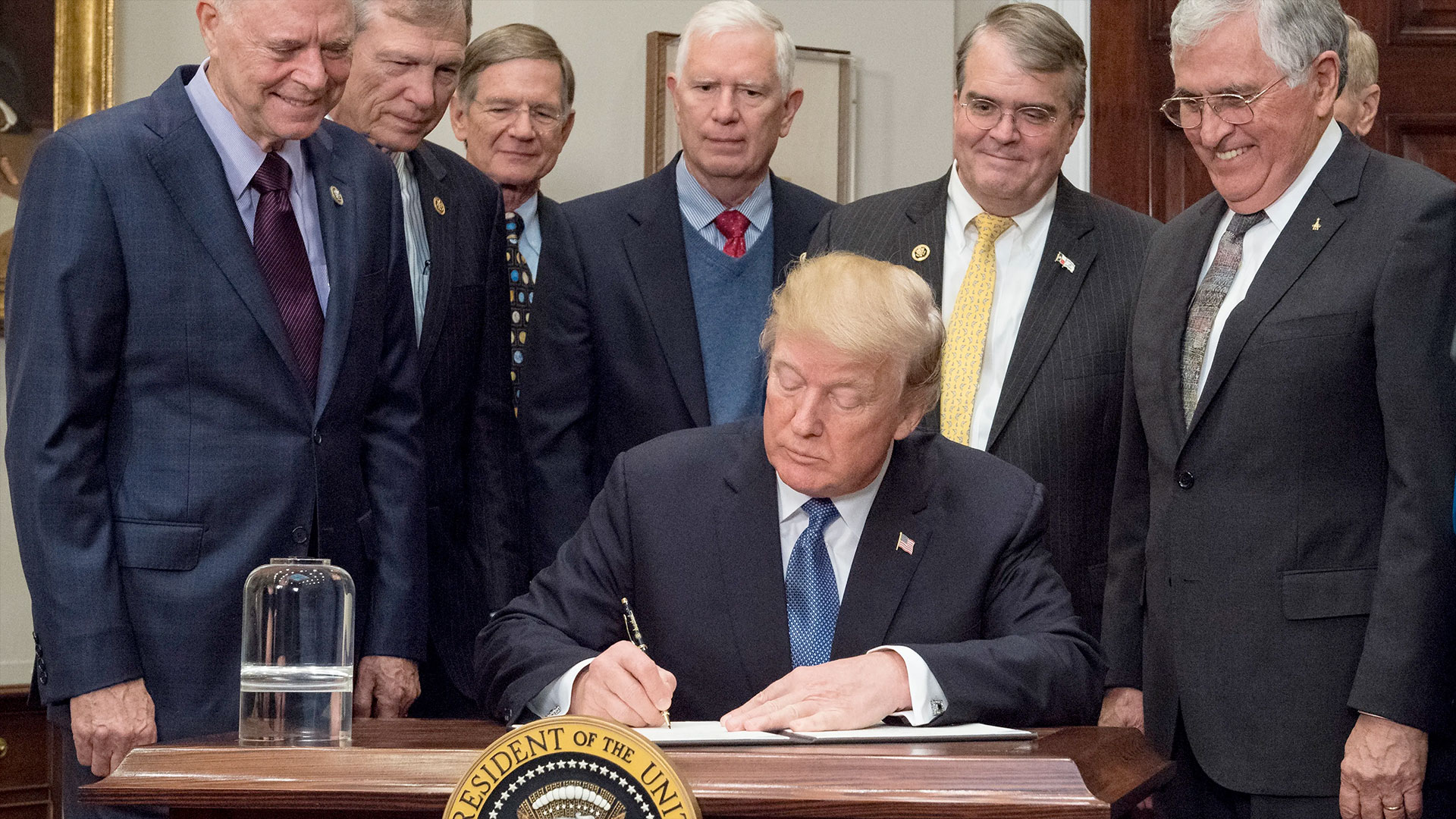
Moon rocks have also made brief visits at the White House. During Trump's first term in office, a different Apollo 17 rock was on display for the 2017 signing of Space Policy Directive 1, which instructed NASA to send astronauts back to the moon and then on to Mars.
Follow collectSPACE.com on Facebook and on X at @collectSPACE. Copyright 2025 collectSPACE.com. All rights reserved.
Get the Space.com Newsletter
Breaking space news, the latest updates on rocket launches, skywatching events and more!
Join our Space Forums to keep talking space on the latest missions, night sky and more! And if you have a news tip, correction or comment, let us know at: community@space.com.

Robert Pearlman is a space historian, journalist and the founder and editor of collectSPACE.com, a daily news publication and community devoted to space history with a particular focus on how and where space exploration intersects with pop culture. Pearlman is also a contributing writer for Space.com and co-author of "Space Stations: The Art, Science, and Reality of Working in Space” published by Smithsonian Books in 2018.In 2009, he was inducted into the U.S. Space Camp Hall of Fame in Huntsville, Alabama. In 2021, he was honored by the American Astronautical Society with the Ordway Award for Sustained Excellence in Spaceflight History. In 2023, the National Space Club Florida Committee recognized Pearlman with the Kolcum News and Communications Award for excellence in telling the space story along the Space Coast and throughout the world.

